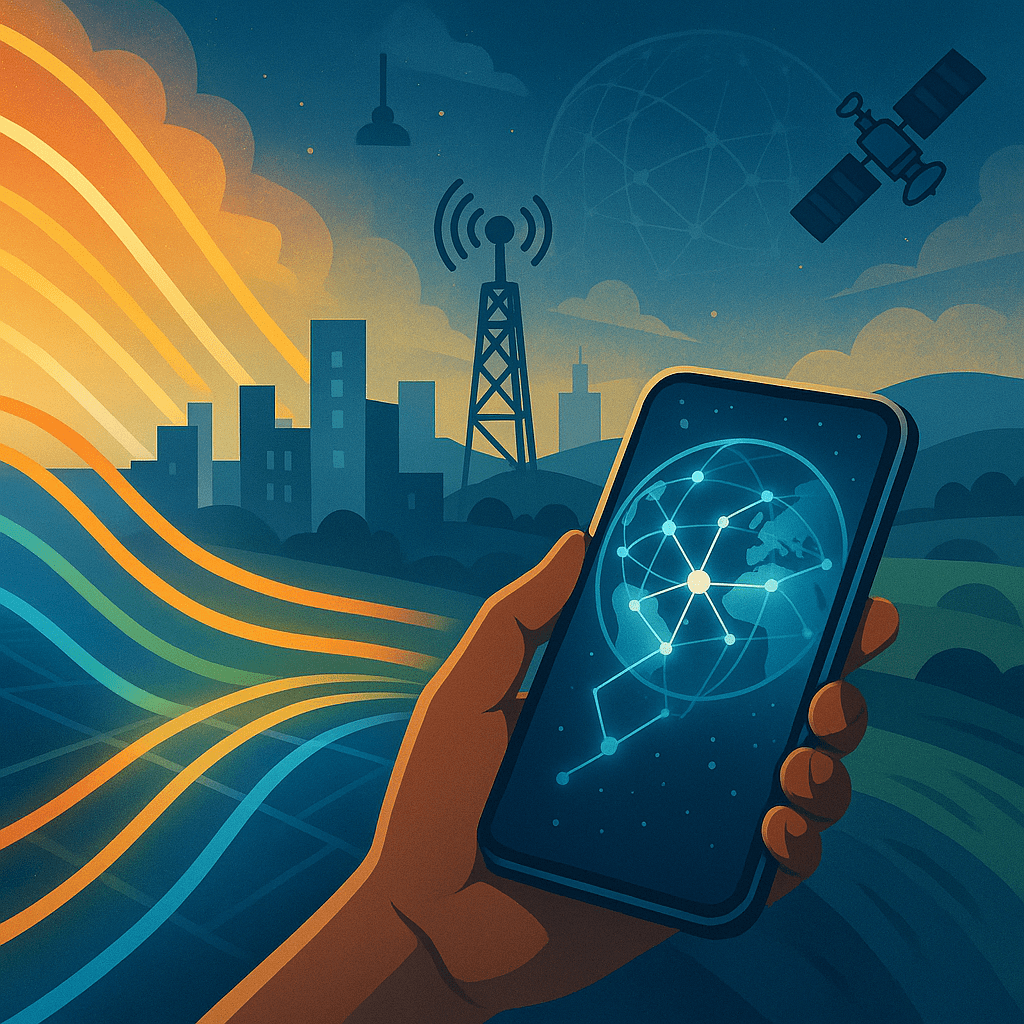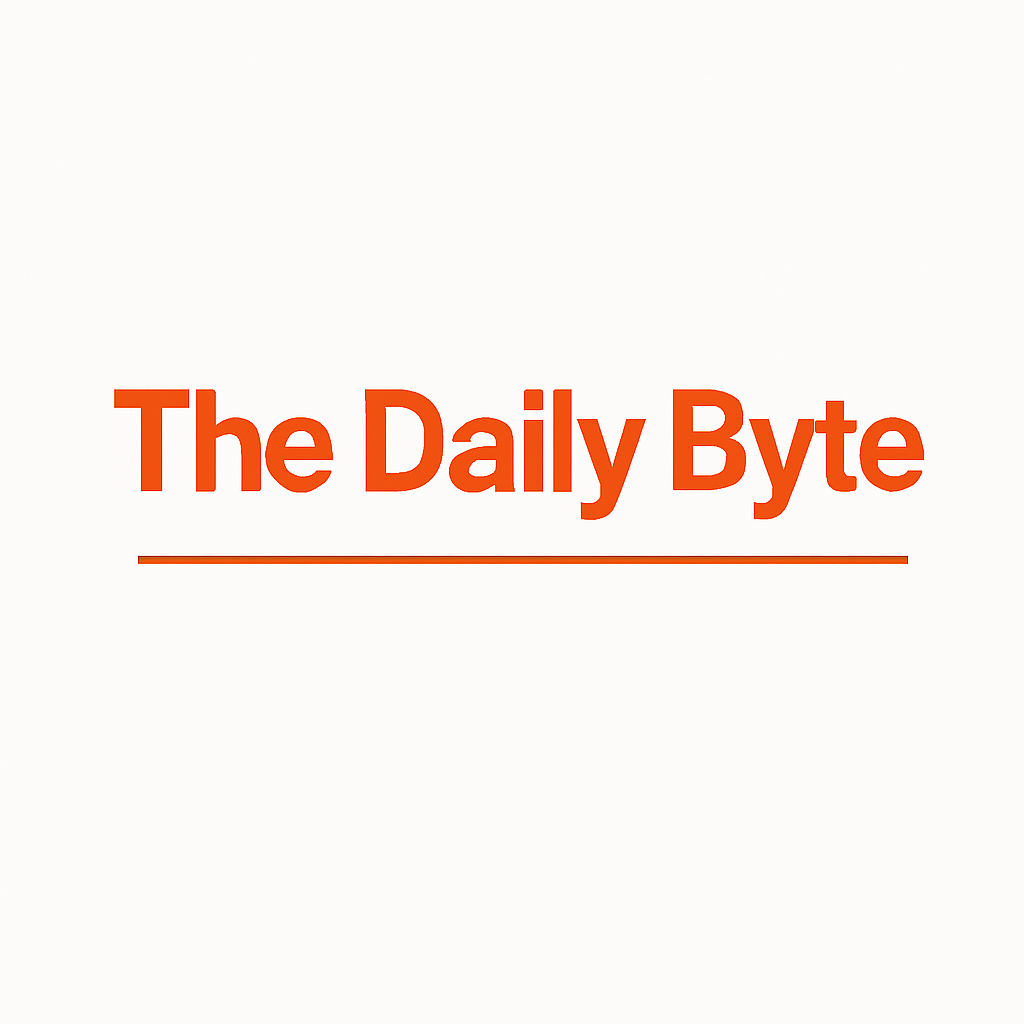Internet Cost in South Africa 2025

Internet Cost in South Africa 2025
In 2025, South Africans are more connected than ever—accessing information, streaming entertainment, and powering businesses online. But amidst the proliferation of options, a critical question remains: at what actual internet cost in South Africa are we truly connecting? While telecoms aggressively market their “affordable” packages, the real picture on the ground is often far more complex and costly.
Between restrictive data caps, lengthy contract lock-ins, persistent poor rural access, and inconsistent service delivery, South African internet users are navigating a fragmented and challenging digital landscape. This in-depth article takes a brutally honest look at the cost of internet in South Africa. We’ll compare major providers across fibre, LTE, 5G, and satellite, expose common hidden fees, delve into real-world usage costs, and reveal where your hard-earned money is truly going when you access the internet in SA. Our goal is to help you understand how much are South Africans really paying for internet in 2025.
South Africa’s Internet Ecosystem – Key Players & Technologies
Understanding the dynamics of the South African internet market is the first step to decoding internet pricing in 2025. It’s a competitive landscape shaped by diverse technologies and numerous providers.
Key Players in SA Internet
- Fibre ISPs: Openserve (wholesale network), Vumatel (wholesale), Frogfoot (wholesale), Afrihost, Vox, RSAWeb, Cool Ideas, Mweb, Herotel, Vodacom Fibre.
- Mobile ISPs (LTE/5G): MTN, Vodacom, Telkom, Rain, Cell C, Supersonic (powered by MTN).
- Satellite Providers: Starlink (currently operating via roaming, unofficial status), Vox satellite.
Technology Breakdown & Speed Reality
To gauge the true internet cost in South Africa, we must consider the technology delivering the service and its typical performance.
| Internet Type | Primary Use | Availability | Average Median Download Speed (Q1 2025) | Optimal Use Case |
| Fibre Broadband | Home, business | Urban & suburban | 48.34 Mbps (fixed median) | High-speed, stable, truly uncapped for multiple users |
| LTE/4G Mobile Data | Mobile, remote | National (variable quality) | 37.5 Mbps (mobile median) | Portable internet, moderate home use where fibre lacks |
| 5G (Fixed Wireless Access) | Home, business, mobile | Select urban & metro areas | 50-150 Mbps (Rain users) | High-speed home internet alternative to fibre |
| Satellite (e.g., Starlink) | Remote/rural, Mobile | Full national | 50-150 Mbps (Starlink) | Essential connectivity for off-grid or unserved areas |
Data Sources: DataReportal, Opensignal Q1 2025, MyBroadband, Ookla Speedtest Intelligence. Speeds are averages and can vary greatly by location and network.
Fibre Pricing Breakdown in South Africa — 2025
Fibre optic internet remains the preferred choice for reliable, high-speed connectivity in South African urban and suburban areas. When evaluating fibre prices South Africa 2025, it’s important to note that costs can vary based on the speed tier, the Internet Service Provider (ISP), and the underlying Fibre Network Operator (FNO).
| Speed Tier | Average Monthly Price | ISP Examples | Best For |
| 25–50 Mbps (Entry-Level Fibre) | R499 – R699 | Afrihost, Vox, RSAWeb, Herotel, Vodacom, Mweb | Small households, light streaming, general Browse |
| 100 Mbps (Standard Fibre) | R699 – R999 | Cool Ideas, Openserve, Mweb, Vumatel, Frogfoot | Families, moderate streaming, online gaming, WFH |
| 200–500 Mbps (High-Speed Fibre) | R999 – R1,499 | Vumatel, MetroFibre, Vodacom, Afrihost, RSAWeb | Heavy streamers, multiple users, large file transfers |
| 1 Gbps+ (Premium Fibre) | R1,499 – R1,999 | Frogfoot (select areas), Telkom Fibre, Cool Ideas | Power users, SMEs, professional streaming, future-proofing |
Hidden Costs of Fibre Installation:
- Installation fees: R500–R999 – Often waived on 24-month contracts (a common “contract trap”), but can apply for month-to-month plans or specific FNOs.
- Router charges: R400–R1,200 – if not included as a “free-to-use” device on contract. Always confirm if the router is a loan or a purchase.
- Relocation fees: Can apply if moving house and requiring a new fibre installation, sometimes costing several hundred rand.
Real User Experience with Fibre:
While fibre generally offers stable and truly uncapped internet, speed inconsistencies and fibre network congestion in dense areas are growing complaints. Users in under-served suburbs or newly rolled-out areas often report paying standard South Africa internet prices for less reliable speeds than advertised. For the best experience, research specific FNO performance in your area.
LTE and 5G Internet Cost in SA 2025
Mobile broadband through LTE and 5G offers crucial flexibility and broader coverage, especially for those outside fibre-ready zones or who need portable connectivity. However, the promise of “uncapped” internet often comes with significant caveats, directly impacting the cost of internet in South Africa.
| Plan Type | Monthly Price | Data Cap/Fair Usage Policy (FUP) | Network |
| LTE Uncapped (MTN/Vodacom) | R699 – R999 | Fair usage limits apply | MTN, Vodacom, Telkom (LTE-A) |
| LTE Capped (e.g., 100-150GB bundles) | R349 – R599 | 100GB – 150GB | Telkom, Cell C, MTN, Vodacom |
| Rain 5G Standard | R559 | Unlimited (FUP applies) | Rain |
| Rain 5G Premium | R799 | Truly Unlimited (no FUP) | Rain |
| MTN Fixed LTE (30GB anytime + 30GB night) | R239 | 60GB total (split) | MTN (via Supersonic) |
| Vodacom MyMTN Home Uncapped (FWA) | From R699 | FUP (e.g., 500GB) | Vodacom |
Speed Reality Check for LTE & 5G Deals:
- LTE speeds: Highly location-dependent, ranging from 10–60 Mbps, but can drop significantly during peak congestion or in remote areas.
- Rain 5G: Reports indicate 30–200 Mbps in ideal conditions, with median mobile internet download speeds in SA at 51.43 Mbps (Ookla, Jan 2025). Note that 5G rollout for MTN and Vodacom slowed in early 2025, focusing on dense metro and township areas rather than widespread national coverage.
- Throttling & Peak Time Issues (The “Uncapped” Trap): This is a critical factor affecting LTE deals South Africa. Many mobile providers implement a Fair Usage Policy (FUP). While they advertise “uncapped,” speeds are often throttled drastically after consuming 100GB–200GB (sometimes up to 500GB) on LTE uncapped plans. This means consistent high-speed internet for truly heavy users on most mobile networks is a myth unless they opt for premium, higher-priced “unlimited” plans like Rain 5G Premium. Congestion during peak hours (evenings and weekends) is a reported issue even for Rain 5G.
Starlink & Satellite Internet Pricing in South Africa 2025
Starlink has emerged as a game-changer for connectivity in previously underserved areas, offering high-speed satellite internet. However, its unofficial status and the associated Starlink South Africa price present unique challenges and significantly higher internet cost in South Africa.
| Item | Cost | Details |
| Monthly Service (Roaming) | R1,799 – R2,200 | Based on reported grey-market roaming subscriptions (e.g., Mozambique, Namibia). |
| Hardware (Dish & Router) | R10,000 – R15,000 | Upfront cost after import duties and reseller markup. |
| Setup & Shipping (Initial) | R1,000 – R2,000 | For unofficial imports and basic setup. |
Coverage & Latency:
- Coverage: Full national coverage, including the most remote regions, making it ideal for rural, off-grid, and mobile households (e.g., caravanning, remote farms).
- Latency: Significantly lower than traditional geostationary satellites, with reports of 40ms – 80ms as of June 2025 due to new ground stations in Kenya and Mozambique. While improved, this is still not ideal for competitive, low-latency online gaming (where fibre offers <20ms).
Verdict on Satellite Internet:
Starlink fills a critical gap for rural and mobile users, offering speeds that can rival fibre in areas where no other high-speed option exists. However, it is priced well above fibre and LTE due to import costs and the roaming subscription model. Its future official status in South Africa hinges on regulatory changes, particularly the proposed “equity-equivalence” amendment introduced in May 2025, which could allow it to satisfy local ownership requirements without share transfers. Until then, every dish on South African soil is technically unlicensed and could potentially be switched off.
The Hidden Costs of Being Connected in SA
Beyond the advertised monthly fees, South Africans face several less obvious charges and structural issues that significantly inflate their overall expenditure and contribute to the true internet cost in South Africa.
- Devices & Routers:
- Average upfront cost: R500 – R1,500 for quality LTE/5G routers if not included.
- Often excluded in prepaid LTE deals, forcing users to buy their own compatible hardware. Fibre routers are usually “free-to-use” on contract but must be returned upon cancellation, or a penalty fee applies.
- “Uncapped” ≠ Truly Unlimited:
- Fibre: Generally truly uncapped, but some FNOs might implement traffic management policies during peak hours, affecting perceived speed for heavy users.
- LTE/5G: This is perhaps the most significant “hidden cost.” “Uncapped” plans almost universally come with Fair Usage Policies (FUPs) that throttle speeds drastically after a data threshold (e.g., 100GB, 200GB, 500GB). This means consistent high-speed internet for truly heavy users on most mobile networks is a myth unless they upgrade to premium, higher-priced “unlimited” plans like Rain 5G Premium. Always scrutinize the FUP before signing up for LTE deals South Africa.
- Contract Traps & Lack of Flexibility:
- 24-month contracts: While often used to entice with “free” installation or routers, they lock users in with hefty penalties for early termination. This reduces flexibility in a rapidly evolving market where better internet deals South Africa might emerge.
- Month-to-month plans: These offer superior flexibility and no lock-in but almost always come at a premium monthly price compared to their contract counterparts.
- Regional Disparities & The Digital Divide:
- Provinces like Eastern Cape, Limpopo, and parts of KwaZulu-Natal still significantly lack fibre or consistent, high-speed LTE coverage.
- Users in these areas are often forced to rely on expensive, smaller mobile data bundles or to invest in high-cost satellite solutions as their only viable options. This digital divide disproportionately affects lower-income communities and rural businesses. As of early 2025, approximately 13.6 million South Africans (21.1% of the population) remain offline, highlighting this significant challenge in bridging access.
Cost-per-GB Analysis – Finding Real Value in South Africa Internet Prices
To truly understand value and find the most affordable internet pricing in 2025 for your usage, it’s crucial to look at the effective cost per Gigabyte (GB) across different internet types. This reveals which connections offer the most data for your Rand.
| Plan Type | Estimated Cost per GB (Average Usage) | Insight |
| Fibre 100 Mbps (Truly Uncapped) | R0.50 – R1.50 per GB | Best Overall Value. If you can get it and use a lot of data (e.g., 500GB+ per month), fibre remains the most cost-effective option per GB. The cost per GB inherently decreases as your overall data consumption increases due to the fixed monthly fee. |
| LTE 100GB Bundle | R3.50 – R6.00 per GB | Higher Cost per GB for Capped. More expensive for data, but offers flexibility for moderate users who need specific data amounts. The price per GB drops significantly for larger bundles (e.g., 100GB+). For example, while 1GB might cost around R85, a 20GB bundle could bring the effective cost down to ~R15/GB. |
| LTE Uncapped (with FUP) | R2.00 – R4.00 (before soft cap) | Variable Value. Good for moderate to heavy users who don’t consistently hit FUP limits. Once throttled, the effective cost per usable GB skyrockets, making it poor value for very heavy users. Be aware of the FUP threshold – it dictates your real value. |
| Rain 5G Premium (Truly Unlimited) | R0.80 – R1.20 (unofficial estimate based on high usage) | Excellent Value (where available). For those in Rain’s 5G coverage, especially with the Premium truly unlimited plan, the cost per GB can rival or even beat fibre for very heavy data consumers, as there’s no FUP to factor in. This positions it as a strong contender in 5G internet cost SA. |
| Starlink (Roaming) | R6.00 – R8.00 per GB (avg) | Highest Cost per GB. The most expensive per GB due to high hardware and monthly roaming fees. However, it fills a niche no other provider serves, making it the only high-speed option for some remote users. Thus, for them, it represents value for accessibility, despite the high per-GB cost (based on a monthly average usage of 250-350GB). This is a key part of understanding Starlink South Africa price. |
Use Cases — What’s the Best Internet Deal for Your Wallet?
Choosing the “best” internet plan isn’t just about the lowest advertised price; it’s about aligning the technology and package with your specific needs, location, and budget. Here’s a guide to finding the best internet deals South Africa for various profiles:
| Profile | Best Option | Why |
| Urban Family (heavy streaming, multiple devices, gaming) | Fibre 100-200 Mbps | High speed, genuinely uncapped (generally), and a stable connection are ideal for multiple concurrent users, HD/4K streaming, and low-latency gaming. Offers the lowest internet cost in South Africa per GB for heavy users. |
| Student on a Budget (some streaming, online learning) | Rain 5G Standard (R559/month) or Telkom LTE 50GB-100GB | Rain 5G offers an affordable uncapped option for study and entertainment (within FUP). Telkom LTE bundles offer great value for capped data users. |
| Rural Homestead (no fibre/LTE coverage, critical connectivity) | Starlink | Often the only option with decent speeds and sufficient data for modern internet use, despite the premium Starlink South Africa price and unofficial status. |
| Mobile Freelancer/Road Warrior (on the go, moderate data) | LTE 100-200GB Capped Plan / MTN Fixed LTE | Offers flexibility with data bundles that can be topped up. Moderate speeds are suitable for remote work, emails, and video calls without the overhead of fixed line. |
| SME Home Office (VoIP, video calls, cloud services) | Fibre 200 Mbps+ | Provides VoIP-ready speeds, consistent uptime, and low latency essential for business operations, reliable cloud access, and seamless video conferencing. Prioritise stability for business-critical tasks. |
| Casual User (emails, light Browse, social media) | Smaller LTE Capped Bundles (e.g., Telkom 20GB for ~R150) | Cost-effective for basic internet needs without committing to high monthly fees or dealing with FUPs. Pay-as-you-go or smaller monthly bundles can be smart internet deals South Africa. |
Is SA Internet Getting Better or Just More Expensive?
The landscape of internet cost in South Africa in 2025 is a mixed bag of opportunities and persistent challenges. While South Africans enjoy more internet options and generally faster speeds than ever before, true affordability, service transparency, and equitable infrastructure rollout remain significant barriers for many.
Fibre continues to offer the best value where it’s accessible, providing superior speeds at competitive rates per GB for heavy users. Rain’s 5G plans are notably improving mobile affordability, particularly in Gauteng metros, by challenging the traditional FUP model on their premium tier, offering genuinely uncapped internet SA 2025. Meanwhile, Starlink provides critical high-speed coverage for rural users, albeit at a substantial premium and under an unofficial regulatory cloud.
Ultimately, the cost of internet in South Africa isn’t just about the rand value you see on a monthly bill. It’s intrinsically linked to guaranteed access, consistent speed (internet speed South Africa), and clear service transparency from providers. If you’re serious about saving money and getting optimal value, a thorough evaluation of your specific location, typical data usage patterns, and the often-complex provider contract terms (especially regarding FUPs and hidden fees) is absolutely essential.
Need help comparing plans or choosing the right ISP for your area? Visit our [Internal Link: Tools section for up-to-date fibre, LTE, and 5G availability maps by area] and use our [Internal Link: internet cost calculator] to estimate your true cost of connectivity. Explore [Internal Link: more articles on best internet providers South Africa] to make an informed decision.




